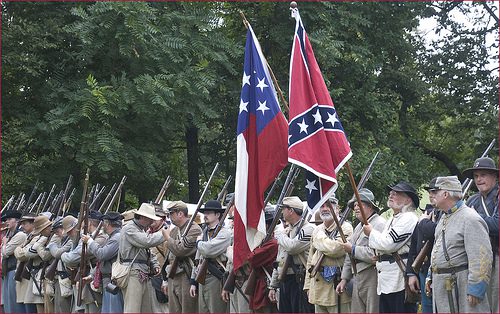
Beyond the immediate term, there are long term efforts to make Civil War related tourism a permanent and big part of economic development in Virginia and elsewhere in the South.
Here’s one example: The Journey Through Hallowed Ground is an effort by planners to bring attention to the small towns between Northern Virginia and Charlottesville, along a route that was a hotbed of Civil War activity. Driving in this region, you can hardly turn down a road where there isn’t a sign that says Robert E. Lee, Stonewall Jackson or some other luminary of those years camped there or drew a sword.
It's a curious form of economic development. Clearly there's enormous interest in the Civil War, so why shouldn't communities reap revenue from it? At the same time, the emphasis on the military battles often downplays or ignores slavery, which was the cause of the conflict.
Some aspects of the war that tourists don’t usually hear about have been brought back to the surface, too. Like the epic escape of African American slaves across a river that was the line between territory controlled by the Confederates and the Union.
Then there are things that went on for a century or more before the Civil War brought them to an end. Such as the slave sales that went on at Shockoe Bottom in Richmond, where slaves by the thousands were sold down the river to cotton plantations in the Deep South. Recently the mayor of Richmond announced a plan to build a baseball stadium partially on the site where these sales took place. There has long been tension in Richmond over how much to “unearth” this history, especially in a city famous for Monument Street, lined with the statues of Confederate heroes.
I’ve noticed a lot of people in the South have a very different understanding of what happened during the Civil War than people up North. Starting with the name of the conflict itself, which some prefer to call the War Between the States. I recently was told by one older woman, a native of the South, that the war was not about slavery, but about states’ rights. She also argued that Lincoln had started the war, not the South, and that he had done so for much more selfish reasons than to free the slaves. I thought, but did not say, that the South did indeed fight for states’ rights, in particular a state’s right to allow its citizens to own slaves.
These exchanges cause me to understand better what people mean when they say that for some, the war has never ended, which ought to make tourist visits to Civil War shrines a very touchy experience. But it’s interesting that the rhetoric of the present is generally kept out of the battlefield tours and the reenactments. People get a strictly historical sense of things, that the war was terrible but it’s all in the past. But really the war wasn’t so long ago, and many things that came later—reconstruction, Jim Crow, Civil Rights, integration, economic development of the “New South”—are all links in a chain of events.
Everywhere you go in the South, you can see evidence that the region has developed very differently from the North. It was a rural region where slavery was the bedrock of the economy, and the South has been trying ever since to re-invent itself. But the politics of the region, around every issue, including Obamacare, continues to be shaped to some extent by the region’s history of defining itself in relation to the North.
Still, politics doesn't mix well with tourism, especially if it might put a damper on economic development.
(Photo by Ron Cogswell CC BY)






Comments